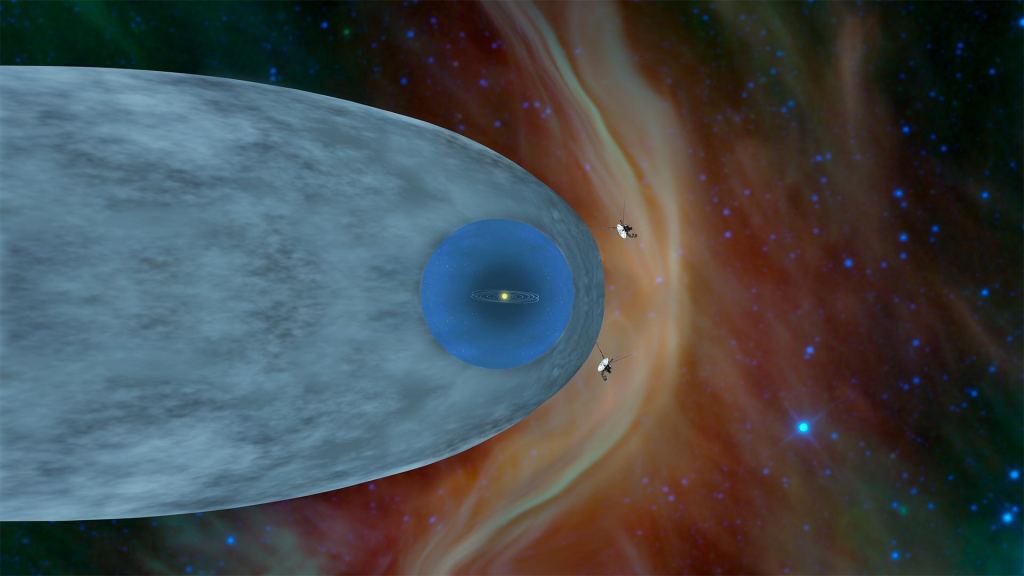Astronomy Jargon 101: Heliosphere

In this series we are exploring the weird and wonderful world of astronomy jargon! You’ll push the boundaries with today’s topic: the heliosphere! If you want a handy definition of what’s “inside” the solar system, then the heliosphere is your best bet. This is a region dominated by particles constantly emanating from the Sun, and the Sun’s own magnetic field. This region extends out to millions of kilometers, well past the orbit of Pluto. The Sun constantly generates something called the solar wind, which is made up of almost entirely electrons. These electrons stream throughout the solar system. But eventually they encounter the general interstellar medium, which is a thin plasma made of particles not originating in our system. Because the solar wind blows so quickly, it carves out a low-density “bubble” in the surrounding interstellar medium. It’s this bubble that we call the heliosphere. At the outermost edge of the heliosphere sits the termination shock, where the solar wind particles rapidly decelerate when they hit the interstellar medium. Past that is the heliosheath, which is a broad and fuzzy transition region where the solar wind mixes with the interstellar medium. The place where the mixing finally finishes and you encounter pure interstellar space is called the heliopause. The sun’s magnetic field, which stays dominate inside the heliosphere, protects the solar system from deadly charged particles coming in from the surrounding galaxy. Despite its name, the heliosphere isn’t exactly a sphere. Because the Sun is moving in its orbit around the center of the Milky Way, the heliosphere takes on a long, comet-tail appearance. It’s blunted in the direction we are traveling and extends in a long tail behind us. Two spacecraft have made their way beyond the heliosphere. Voyager 1 reached the heliopause on August 25th, 2012, followed by Voyager 2 on November 5th, 2018. This achievement makes them the only human-built machines to currently exist in interstellar space. The post Astronomy Jargon 101: Heliosphere appeared first on Universe Today.
Read original article here.
Written by: Paul M. Sutter

Facebook Comments